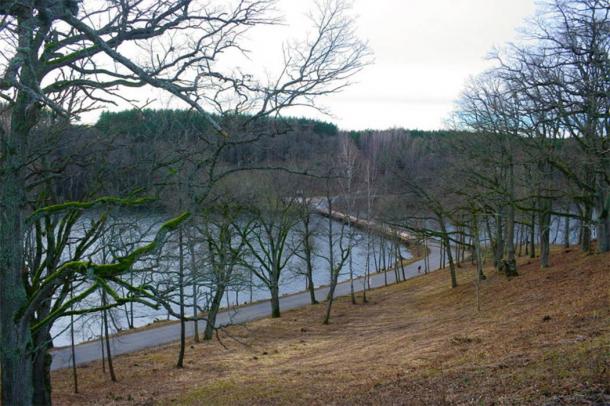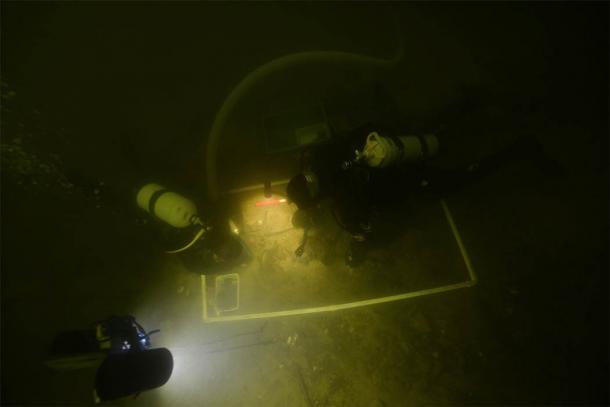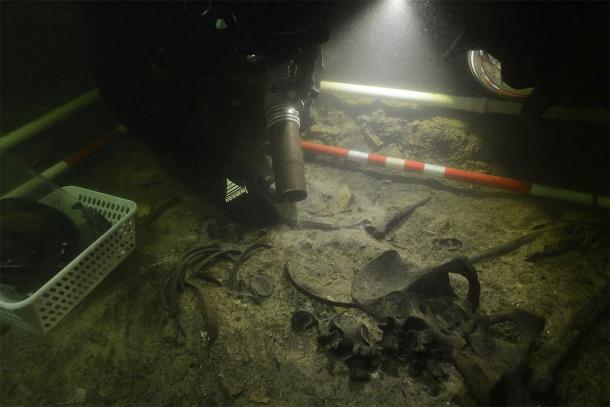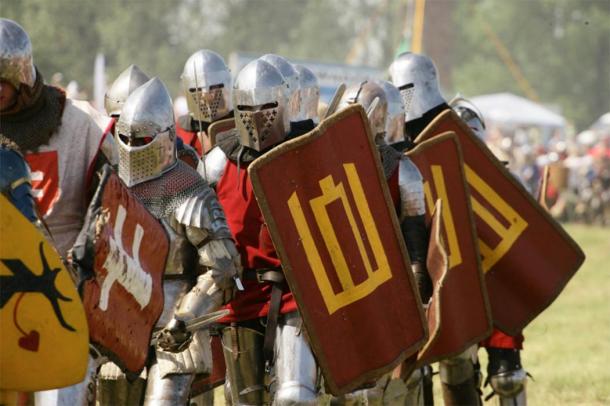Divers and archaeologists in Lithuania have found the remains of a medieval soldier in a lake. The discovery is offering researchers the opportunity to understand more about the people of the Middle Ages. This is because many of the medieval soldier’s personal belongings were discovered in a great state of preservation. The remains of the soldier may be linked to one of the most important castles in the Baltic region in medieval times.
Lake Asveja is the largest lake in Lithuania. According to the Baltic Course , the lake ‘has been intermittently explored using underwater archaeological methods since 1998’. Many finds have been retrieved from the waters and these include the remains of boats and possibly a ferry, and also the poles of what has become known as the Old Dubingiai bridge. The old bridge was found not far from a present-day bridge that is still in use. Artifacts from the 16th and 17th century have been found beneath the waters of the lake as well.

Asveja Lake bridge seen from the Dubingiai Castle hill. (Julius/ CC BY SA 3.0 )
A Medieval Soldier in the Mud and Sludge
During a recent dive, something amazing was found. Some human remains were uncovered at the bottom of the lake. LRT English quotes archaeologist Elena Pranckenaite as saying that “The human remains were found under a layer of mud and sand at a depth of nine meters.” A floating water pump was used to remove the silt and sediment from the remains. The human remains were revealed by carefully removing sludge and sand. Ms. Pranckenaite told LRT English that “the underwater find, which was not a burial, was unique and the first of its kind in Lithuania.”

Underwater archaeologists examining the artifacts in Lake Asveja, Lithuania. ( G. Krakauskas )
Sputnik News states that ‘According to initial investigations by anthropologists, the discovery is said to be the remains of a young man’. It is believed that the young man was a medieval soldier. This was based on the artifacts found on the remains.
A sword was found next to the body and two knives and some leather objects such as straps were also recovered. The young man had died wearing some sturdy leather boots. All of these items have been preserved in the sediment in the lake floor, to the amazement of the divers and the archaeologists.

Recovering the medieval soldier’s remains from Lake Asveja. ( G. Krakauskas )
Anthropologists could not estimate the date of the remains from a study of the bones. However, a study of the sword and other objects allowed experts to identify the period when the soldier lived. BNS reports that ‘these finds can be dated to the 16th century’.
This was the time when the Grand Duchy of Lithuania was one of the most powerful states in Eastern Europe and controlled lands as far south as Ukraine. The Duchy was in a dynastic union with the Kingdom of Poland.
He Was Found Near Dubingiai Castle
LRT English reports that ‘The cause of death has not yet been determined’. However, the remains were located near the important fortress of Dubingiai Castle, which today is a ruin on a peninsula near the lake. This was one of the most important fortresses in the Baltics and protected Lithuania from attacks launched from nearby Livonia.
It is possible that the medieval soldier may have died in a conflict or possibly drowned, but it may never be known for certain. There is the possibility that the soldier who died over 500 years ago served in the garrison of the castle.

Representation of Lithuanian medieval soldiers in a re-enactment. ( kam.lt)
The discovery of the medieval soldier is showing once again the archaeological importance of Lake Asveja. Experts moved the remains for further examination at the University of Vilnius, where the bones are being studied by a multidisciplinary team. Once the study is complete, the bones and the artifacts will be transferred to the Lithuanian National Museum, where they will be treated and conserved.
Top image: The medieval soldier’s remains were found in Lake Asveja, Lithuania. Source: A. Matiukas
By Ed Whelan
 RSS Feed
RSS Feed















 November 13th, 2020
November 13th, 2020  Awake Goy
Awake Goy  Posted in
Posted in  Tags:
Tags: 













